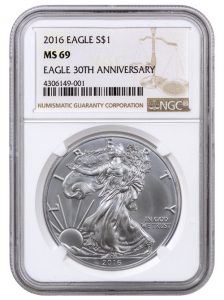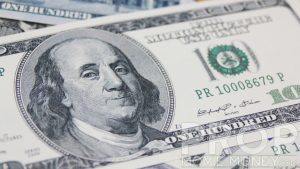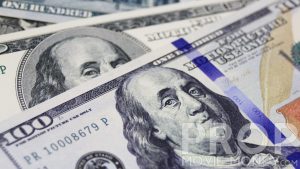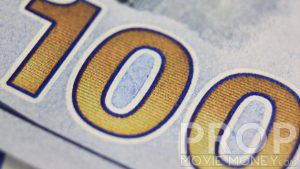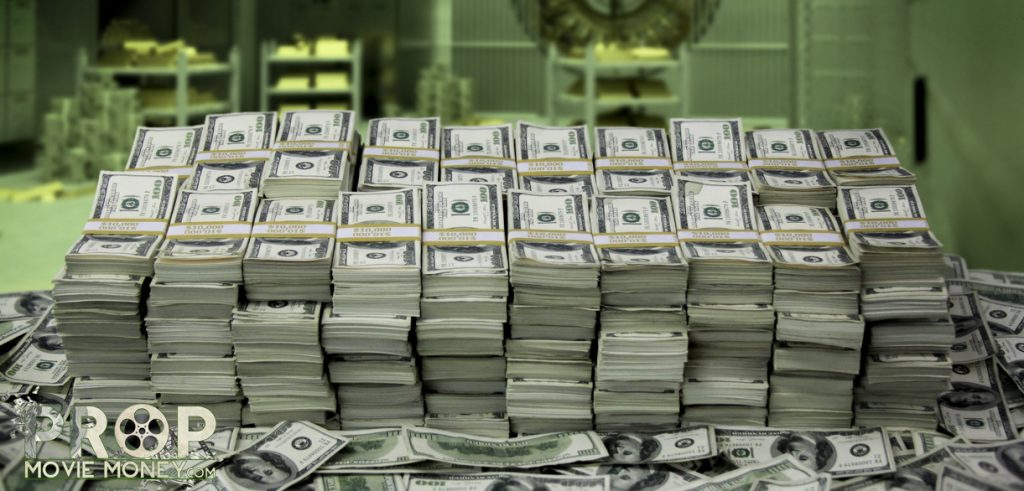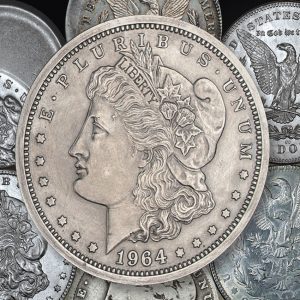Weekly World Numismatic News for May 23, 2021
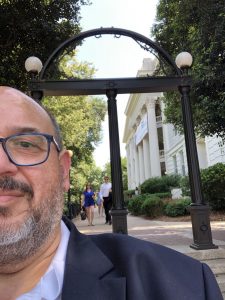
Your humble blogger in front of The Arch at the University of Georgia. The last time I was there I had hair!
This past week, I had to make a trip to Georgia for business. The trip required a flight from Baltimore to Atlanta. Travelers must follow TSA and the FAA rules for safety, including masks in the airport and on planes.
Unfortunately, the wearing of masks became a political issue. It’s not. It’s a mask. The idea of the mask is to protect you and to protect others. Masks are an inexpensive tool to reduce the spread of the virus. Nothing else!
During this trip, I learned the difference in attitudes with different people in Baltimore and Georgia. While at BWI Airport, the less than the capacity crowd was very diligent with their masks. Very few people were leaving noses uncovered, and one person politely asked me to replace my mask after taking a sip from my water bottle. It was a sense of community caring, not punitive.
Hartsfield-Jackson Airport was a different story. The number of people prevented moderate social distancing. Everyone packed into the transport trains, and the mask-wearing varied from covering the chin to uncovering the nose.
Arriving in Athens, Georgia, home of my alma mater, the University of Georgia, the scene was different. Walking the streets and the time I spent on campus, you can tell the difference between the students and everyone else. The students were wearing masks and keeping distances. Students working in local businesses were more diligent than the parents that were in town for commencements.
I had the opportunity to discuss the situation with some of the students. They relayed stories about how the students did not take the pandemic seriously until it spread on campus.
The problems are not with the students and those concerned about public health. The problems are with those who see masks as a conspiracy. Many numismatic dealers have indicated they are on the side of the conspiracy theorists.
The attitude of these dealers, mostly older and obstinant, can turn the re-opening of the hobby into a disaster.
The World’s Fair of Money will be limited to 300 tables to comply with Illinois Health Department rules. Currently, there has been no announcement regarding attendance limited. Given the attitudes of the anti-maskers, especially amongst the dealer population, I am afraid that the World’s Fair of Money will become a super spreader event.
You might want to question my assertion because of the presence of the vaccines. While the vaccines provide immunity against the SARS-CoV-2 virus that has plagued the United States for more than a year, combating the variants is uncertain. Research has shown that the vaccines will fight some of the variants, but not all of them.
As people travel, the variants will spread with the people that will carry them. The only way to prevent the variants from ruining the re-opening is to get serious about wearing masks.
Yes, wearing masks suck. As someone with allergy and respiratory issues, wearing a mask is very uncomfortable. During the workday, I will take my dog for a walk when I need to take off my mask. I know that for a year or two discomfort, we can re-open society and hold shows again.
We need to come together as a community and be leaders for the country. Numismatics has the chance to lead. By leading and acting as we care for one another, we can look like heroes to the rest of the world and possibly attract new members.
Care for your fellow numismatist and potential new numismatists. Wear a mask!
And now the news…
 → Read more at nytimes.com
→ Read more at nytimes.com
 → Read more at cnn.com
→ Read more at cnn.com
 → Read more at the-sun.com
→ Read more at the-sun.com
Is a new grading system needed?
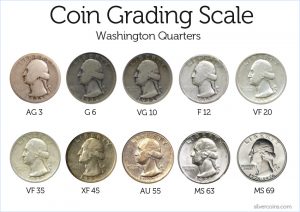 Over the last few years there have been many numismatic writers who have taken to their keyboards to complain about the state of coins grading. Aside from your intrepid blogger there was a series of articles that appeared in Coin World by Q. David Bowers. In his articles, Bowers notes that even though the American Numismatic Association grading standards have not changed in quite some time, coins in older holders usually are graded higher today than they were when originally graded.
Over the last few years there have been many numismatic writers who have taken to their keyboards to complain about the state of coins grading. Aside from your intrepid blogger there was a series of articles that appeared in Coin World by Q. David Bowers. In his articles, Bowers notes that even though the American Numismatic Association grading standards have not changed in quite some time, coins in older holders usually are graded higher today than they were when originally graded.
One area where this is hurting the hobby is when trying to buy coins using online auctions. In a less than scientific study, I have noticed that while looking for a specific coin that coin once graded by the Professional Coin Grading Service in their old green holders (OGH) tend to sell at a price half-way to what it would be if it was the next grade higher. Coins in older Numismatic Guarantee Corporation holders sell close to a similar price.
It is not known how many coins are cracked out of their holders and submitted to the grading services are submitted as raw coins. Most of these “crack out artists” do not turn in the labels for the grading services to adjust their population reports. Some coins could be counted several times by all of the major grading services while collectors fish for better grades.
Part of the problem is with the concept called market grading. Rather than looking at the coin and determine the technical state of preservation, the grading services take that grade and try to rank it within the market of similar coins. In the mean time, they participate in forums that teach technical grading without explaining market grading.
Could there be a better way? On the CDN Publishing Blog is a post by Rick Snow suggesting a different type of grading system based on a 15-point technical scale. Coins would be graded on a 0-5 scale for the condition of the planchet, state of the die as struck, and the strike. In this notation there would be no “Full Bands,” “Full Head,” or similar designations. Those coins would receive a strike score of 5. If that Jefferson nickel does not show all six steps, then the strike would be a 4. A final column would be a color designator with either a percentage of color loss from the original strike or RD (red), RB (red-brown), or BN (brown) for copper coins.
Rather than seeing a grade like XF, AU, or MS and trying to figure out why the coin received the grade, a coin would receive a grade like:
“Adjectival grade” (“Qualifier”: “Factor for Planchet”, “Factor for Die”, “Factor for Strike”, “Color Designation”).
As an example: Gem AU (13: 4, 4, 5, 10%)
The “Qualifier” would be the sum of the factors for the planchet, die, and strike.
It is an interesting idea especially for the current bullion coins. Honestly, can anyone really tell the difference between an American Silver Eagle graded MS69 versus one graded MS70? Yet, just because a grading service can allegedly tell the difference, there could be a two-to-three times difference in the price. However, I wonder if those coins were cracked out of their holders and resubmitted would they maintain their grades?
- 2016 American Silver Eagle graded MS-69 by NGC
- 2016 American Silver Eagle graded MS-70 by NGC
Although the grading services claim that they are doing what is best for the hobby, they are for-profit corporations that has to satisfy a market that seems to be more interested in the plastic and the label than the coin it holds. Even these verification services are for-profit corporations that has owners and investors to answer to. One is even into “market making” by doing arbitrage-like trading of its own stickered coins. This type of market making questions their independence because it appears that they are using their influence to drive up the price of those coins.
Would this type of grading be better for the hobby by providing the collector with more information? Is there an alternative that would fix the current system? Or is the current system just fine? Read the article on the CDN Publishing Blog and leave comments there and/or here!
- Grading scale image courtesy of SilverCoins.com
- Graded American Silver Eagles courtesy of Modern Coin Mart
U.S. Mint to hold Numismatic Forum
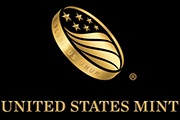 The U.S. Mint announced that they will hold a one-day forum to “share perspectives on the past, present, and future of the numismatic hobby.” It is part of their preparation for the U.S. Mint’s 225th anniversary in 2017. The agenda will be the future of the Mint and the numismatic environment as a whole.
The U.S. Mint announced that they will hold a one-day forum to “share perspectives on the past, present, and future of the numismatic hobby.” It is part of their preparation for the U.S. Mint’s 225th anniversary in 2017. The agenda will be the future of the Mint and the numismatic environment as a whole.
“It seems only appropriate that, while we as a bureau are celebrating our history, the Mint is also looking for ways to improve the way we engage our customers and invigorate our relevance into the future,” said United States Mint Principal Deputy Director Rhett Jeppson.
It will be interesting to hear the discussion and to observe the outcome of this forum because of the limited things the U.S. Mint can do without an act of congress. Although the U.S. Mint can create medals without an act of congress many of the medals they produce are required by law such as the duplicates of the awards to congressional gold medal recipients. As for legal tender coins, most of what the U.S. Mint does is governed by legislation. Although there is some leeway in areas like special finishes for proof and other non-circulating legal tender (NCLT) coins, what the U.S. Mint is allowed to produce is governed by law (see 31 U.S. Code §5112).
One area that they U.S. Mint has had a lot of freedom is the with the 24-karat gold special issue coins. As part of the bill that created the Presidential $1 Coins, there was a section (31 U.S. Code §5112(q))) that allowed the U.S. Mint to string $50 gold bullion coins of .9999 purity (24-karat). The law says that only the first issue must resemble the 1913 Type 1 Buffalo Nickel. Subsequent designs are at the discretion of the Secretary of the Treasury with designs reviewed by the Citizens Coinage Advisory Committee and the U.S. Commission of Fine Arts.
Subsequently, the U.S. Mint used this law to issue the 2009 Saint-Gaudens Ultra High Relief Gold Coin, 2014 Kennedy Half Dollar 50th Anniversary Gold Coin, 2015 American Liberty High Relief Gold Coin, and the 2016 Centennial Gold Coins. Even though the coins are popular and their low mintage does help generate interest, these coins are not affordable to the ordinary collector.
One way to make these available to the average collector is to strike a version as a medal, similar to the First Spouse medals that resemble their gold counterparts without a denomination. First Spouse medals are struck on the same planchet as the modern dollar coins.
The U.S. Mint does not have the freedom other world mints have. It is highly regulated by a congress with a parochial view on its constitutional obligation to coin money (Article I, Section 8). Remember, the U.S. Constitution says that “The Congress shall have Power… To coin Money, regulate the Value thereof, and of foreign Coin,” not micro-manage the process.
From a collector’s perspective, I am not sure what the U.S. Mint can do. They can take notes and recommendations from this forum and ask congress to make changes. However, given the behavior of the members of congress does anyone really think that they will craft any reasonable legislation?
Shortly after the press release landed in my Inbox I responded to the U.S. Mint expressing my interest in attending.
Those interested in attending should submit requests to USMintNumismaticForum@usmint.treas.gov by no later than Sept. 15, 2016. Individual requests to attend should include the person’s affiliation (e.g., hobbyist, coin dealer, coin grader, etc.). Seating is limited and submitting a request does not guarantee admission. Attendance will be at the cost of the participant. Detailed information will be provided to confirmed attendees. For those unable to attend or who do not receive an invitation, any formal presentations made by the Mint during the forum will be made available online as soon as practicable after the event.
Prop counterfeiting is the new threat
One of the strangest set of stories about the problem of counterfeiting was the several stories that came out at the end of August about people trying to make purchases with movie prop money. This has caused regional U.S. Secret Service across the south to issue warnings.
Prop movie money is designed to look close enough to real U.S. currency so that a moviegoer would not be able to tell the difference on screen. When these notes are examined closely, they are clearly marked with “THIS NOTE IS NOT LEGAL TENDER” and “FOR MOTION PICTURE USE ONLY.” Prop money is smaller than real U.S. currency and does not have the anti-counterfeiting features of a real Federal Reserve Note. But that has not stopped people from trying to pass these notes as real currency.
- Prop Movie Money
- Prop Movie Money
- Prop Movie Money
Here is a sample of the reports about people trying to use prop money as real currency:
In Athens, Georgia, a 30 year-old man beat a customer with a baseball bat at a fast food restaurant when he alleged the customer bought marijuana using two prop $100 notes.
Police in the Gwinnett County, a suburb of Atlanta, are looking for two suspects who went on a spending spree by buying two cars and paying with prop money.
Prop money has shown up in Morristown, Tennessee, northwest of Knoxville.
U.S. Secret Service issued a warning in the Tampa Bay area when someone tried to buy a smartphone using prop money and noted that there has been an increase in the use of this currency.
Areas of East Texas have reported several cases in which prop money has been used. Texas Bank and Trust reported that they have seen a few of these notes were deposited into accounts at their bank.
Sources have not confirmed the source of this recent uptick in prop money usage but noted that the currency can be purchased online. Although eBay rules do not allow for this type of currency to be sold on its site, a recent search yielded several listings offering prop money. There is no restriction on Etsy where searches lead to over 300 listings of all types of prop or replica money.
Why was the criminal in the in the Dateline video attached to my post “How easy is it to pass counterfeit currency” so successful? Like he said, nobody pays attention!
August 2016 Numismatic-related Legislation Review
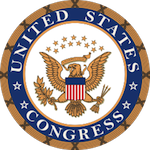 At the beginning of each month, I review the previous month’s activity in congress looking for numismatic nuggets that we hope will bring us new coins to collect. However, congress has been on their summer vacation since mid-July, right before the conventions.
At the beginning of each month, I review the previous month’s activity in congress looking for numismatic nuggets that we hope will bring us new coins to collect. However, congress has been on their summer vacation since mid-July, right before the conventions.
There are two ways of looking at congress being away for at least seven weeks: they get how much vacation while the rest of us have to work? At least they aren’t doing anything to mess things up further.
If congress sticks to their own law of two commemorative programs per year, the next available year is 2019. Although most commemorative programs are fund raising programs, let’s have one that has some meaning. Maybe at some point, in between budget battles, congress will pass Apollo 11 50th Anniversary Commemorative Coin Act.
The Apollo space program has to be one of the greatest accomplishments this nation has made at least in the 20th century. We were challenged by President Kennedy to make it to the moon and to return the astronauts safely back to earth. And in 1969, after getting beat at every milestone into space, Apollo 11 landed on the moon and safely returned their three astronaut payload to Earth before the Soviet Union could do so.
Apollo 11 was one of the most impactful memories of my youth, especially for that year. It only rivals rushing home from school (we had to walk in those days but I think I ran that day) to watch the last out of the 1969 World Series to begin that celebration!
Sen. Bill Nelson (D-FL) introduced the bill in the Senate on May 19, 2016 (S. 2957) and Rep. Bill Posey (R-FL) introduced the same bill in the House of Representatives on June 10, 2016 (H.R. 2726). Both bills have been referred to committee.
If congress passes either of these bills, it would create the following commemorative program:
- Commemorative program issued in 2014
- Required design elements:
- Convex in shape “to more closely resemble the faceplate of the astronaut’s helmet of the time”
- “The Secretary shall hold a juried, compensated competition to determine the design of the common obverse of the coins minted under this Act, with such design being emblematic of the United States space program leading up to the first manned Moon landing.”
- Winning designer to receive no less than $5,000 for their design.
- Common reverse design “shall be a representation of a close-up of the famous ‘Buzz Aldrin on the Moon’ photograph taken July 20, 1969, showing just the visor and part of the helmet of astronaut Edwin ‘Buzz’ Aldrin, in which the visor reflects the image of the United States flag, astronaut Neil Armstrong, and the lunar lander.”
- Mintage Limit: 50,000 $5 gold; 400,000 silver dollars; 750,000 clad half-dollar; 100,000 five-ounce silver proof dollars
- Surcharges of $35 per $5 gold; $10 per silver dollar; $5 per half-dollar; and $50 per five-ounce bullion.
- Payouts: 50-percent to Smithsonian Institution’s National Air and Space Museum’s “Destination Moon” exhibit; 25-percent to the Astronauts Memorial Foundation; and 25-percent to the Astronaut Scholarship Foundation.
Considering how times have changed and we seem to have a different look on the space program, it would be wonderful to honor this achievement to remind everyone of the accomplishment.
POLL: Real or Real Fishy?
Yesterday I wrote about the announcement that the fifth edition of A Guide Book of Morgan Silver Dollars by Q. David Bowers will include evidence that a 1964 Morgan Dollar exists or has existed. As part of their press release, they sent out an image of the cover with the coin. I questioned whether this is real given that their image appears to be of a circulated coin.
After the story posted I have heard from a few readers in private email (I wish you would post it to the page for everyone to read) strongly on one side or another. One person asked why I question the well-respected Q. David Bowers. I responded that just because he is respected does not mean he is not fallible. Bowers is still human and can make mistakes. Besides, we do not learn about our world if questions are not asked.
To add to the suspicion, if you look at the image carefully, there appears to be doubling in the portrait. Look at the left side of Liberty’s face in the image of the 1964 coin and see the doubled image. There is also doubling over Liberty’s throat. Compare it to a known mint state Morgan Dollar and the questions mount.
- Image of the alleged 1964 Morgan Dollar from the cover of A Guide Book to Morgan Silver Dollars 5th Ed. by Q. David Bowers
You decide! Click on the images to enlarge and use the slideshow controls to examine both coins. Do you see the doubling? Do you see the wearing? What do you think?
Do you think the report of the existence a 1964 Morgan Dollar is real?
Total Voters: 25
- 1964 Morgan Dollar image from the cover of A Guide Book of Morgan Silver Dollars courtesy of Whitman Publishing.
- 1879-S Morgan Dollar image courtesy of Wikipedia.

